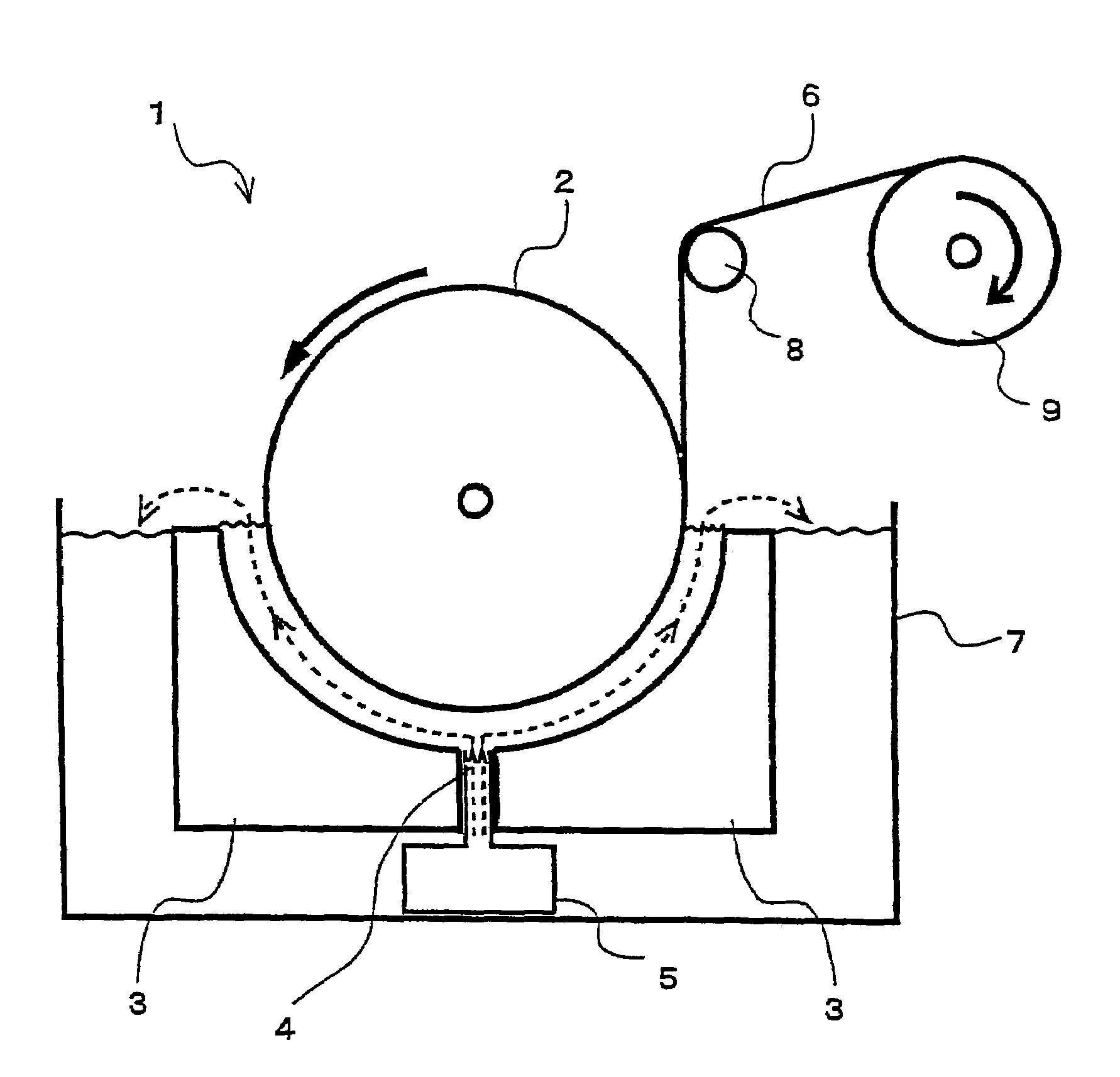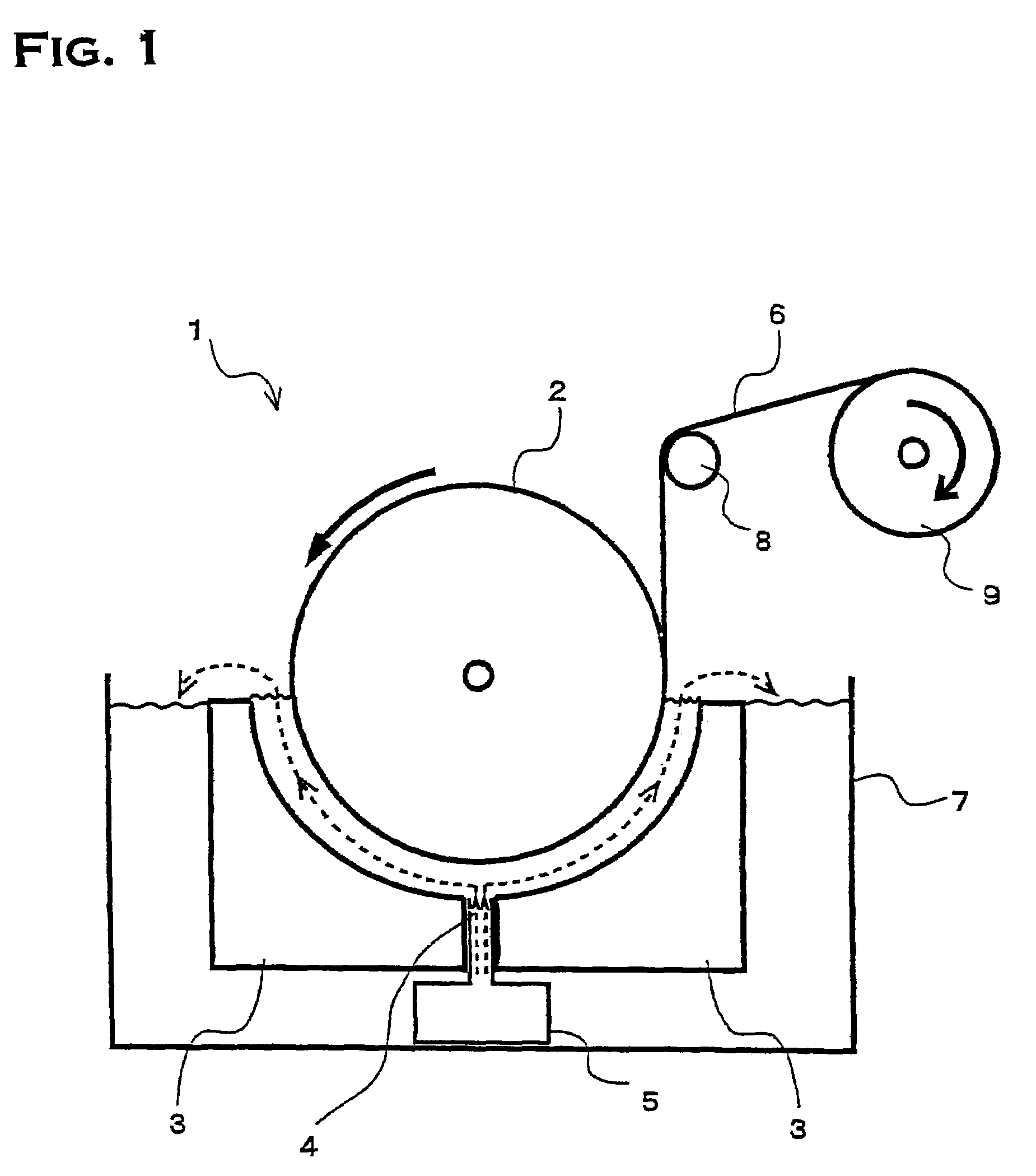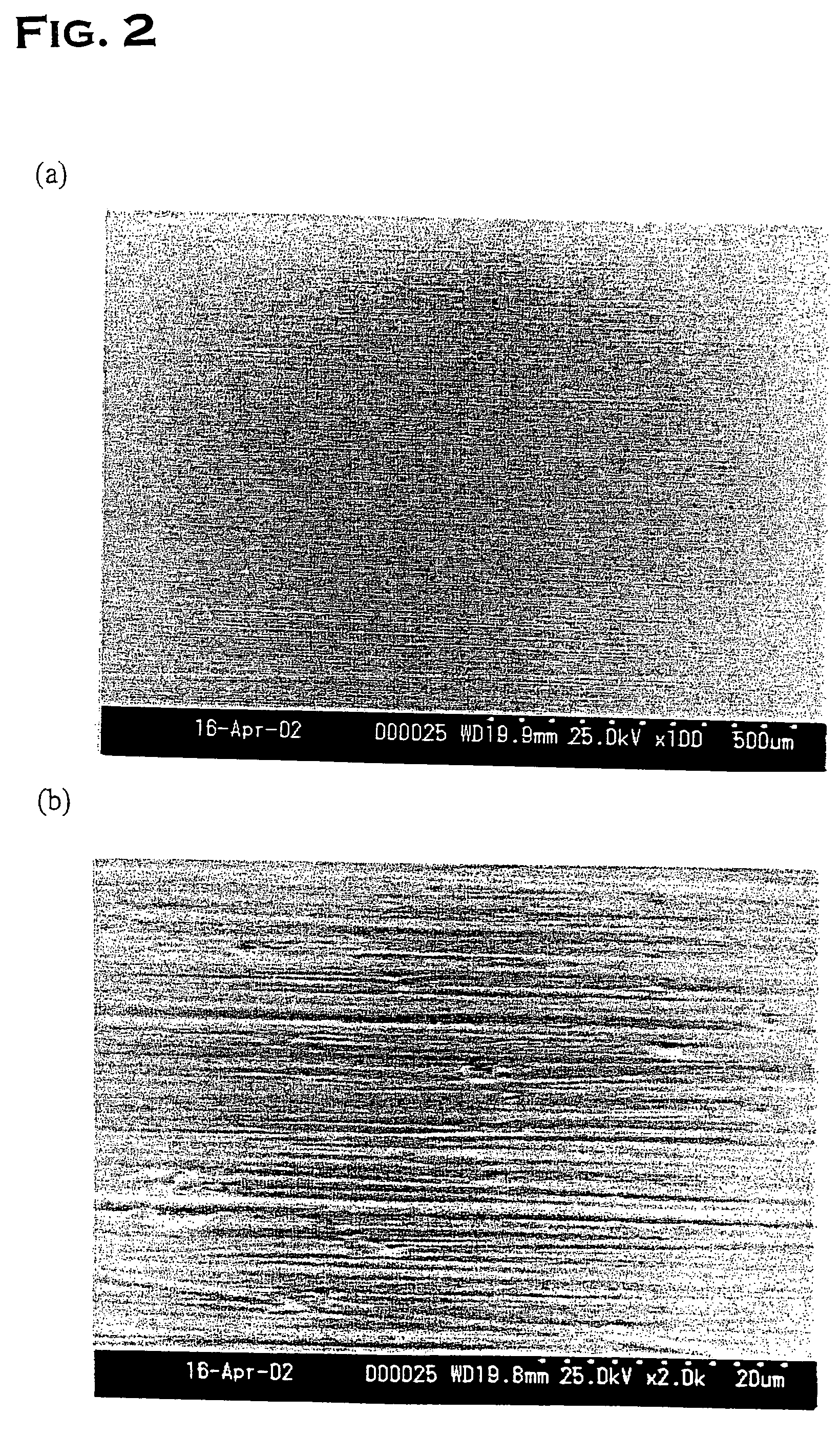Flexible printed wiring board for chip-on flexibles
a flexible, printed technology, applied in the direction of metallic pattern materials, metallic resin layered products, metallic material coating processes, etc., can solve the problems of not being able to identify the surface shape affecting the scattering of light, and be difficult to secure adhesion, improve adhesion, and improve adhesion
- Summary
- Abstract
- Description
- Claims
- Application Information
AI Technical Summary
Benefits of technology
Problems solved by technology
Method used
Image
Examples
first embodiment
[0034]First, in the first embodiment, the manufacture of an electrodeposited copper foil used in the flexible printed wiring board of the present invention will be described. The electrodeposited copper foil is manufactured with electrodeposited copper foil manufacturing equipment using a conventionally known rotating drum cathode, and the schematic sectional view is shown in FIG. 1. The electrodeposited copper foil manufacturing equipment 1 is equipped with a rotating drum cathode 2 made of titanium (diameter: 3 m; width: 1.35 m) for electrodepositing copper, and an insoluble anode 3 known as DSA placed opposite along the peripheral surface shape of the rotating cathode 2. The rotating cathode 2 and the anode 3 are connected to a power supply unit (not shown). The rotating drum cathode 2 is designed so that a substantially half of the volume is immersed in an electrolyte solution; the anode 3 is divided into two portions, and an electrolyte supply means 5 having an electrolyte supp...
second embodiment
[0048]In the second embodiment, the results of examinations about the specular gloss and the optical transmittance of the adhering surface of an electrodeposited copper foil characterized by the types and the surface treatment thereof, particularly with or without nodular treatment, will be described. Table 5 shows various electrodeposited copper foils, and the results of the specular gloss and the optical transmittance thereof.
[0049]
TABLE 5Adhering surfaceSpecular glossRoughenedRoughnessIncident angle 60°OpticalConductive layertreatmentRz μmMDTDtransmittance %ComparativeNormal foil matteYes4.51.31.11.1Example A-1surfaceComparativeMatte side of low-Yes3.51.01.00.8Example A-2roughness foilComparativeShiny side of low-Yes2.60.10.23.7Example A-3roughness foilComparativeShiny side of low-Yes1.70.30.831.3Example A-4roughness foilComparativeShiny side of low-No1.674.8100.644.9Example A-5roughness foilComparativeVacuum-deposited + copper-No———75.0Example A-6plated foilExample A-1Foil of th...
third embodiment
[0055]Finally, concerning the rust proofing treatment on the adhering surface of electrodeposited copper foils, the results of examining the adhesion and migration resistance when flexible printed wiring boards were constituted will be described.
[0056]Adhesion study in the third embodiment was conducted using the electrodeposited copper foil prepared in the same manner as in Example 3 of the above-described first embodiment, whereto each rust proofing treatment shown in Table 6 was performed.
[0057]
TABLE 6Surface treatment of adhering surfaceEvaluationRust proofing treatmentPealing strengthAdhering(kgf / cm)quantitySilane coupling agentIn normalAfterOpticalKindmg / m2TypeConcentrationstateheatingBlackeningtransmittance (%)ComparativeZn36.3a50.380.27Good73.1Example B-1ComparativeZn36.3b50.24—Good68.4Example B-2ComparativeZn36.3c50.00—Good69.2Example B-3ComparativeZn36.3d50.10—Good71.5Example B-4ComparativeZn36.3e50.410.24Good70.3Example B-5ComparativeSn33.0a50.440.68No good51.5Example B-6...
PUM
| Property | Measurement | Unit |
|---|---|---|
| Angle | aaaaa | aaaaa |
| Length | aaaaa | aaaaa |
| Fraction | aaaaa | aaaaa |
Abstract
Description
Claims
Application Information
 Login to View More
Login to View More - R&D
- Intellectual Property
- Life Sciences
- Materials
- Tech Scout
- Unparalleled Data Quality
- Higher Quality Content
- 60% Fewer Hallucinations
Browse by: Latest US Patents, China's latest patents, Technical Efficacy Thesaurus, Application Domain, Technology Topic, Popular Technical Reports.
© 2025 PatSnap. All rights reserved.Legal|Privacy policy|Modern Slavery Act Transparency Statement|Sitemap|About US| Contact US: help@patsnap.com



